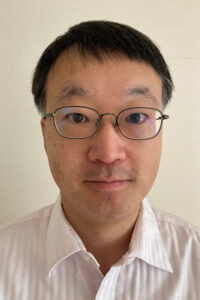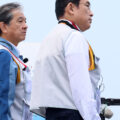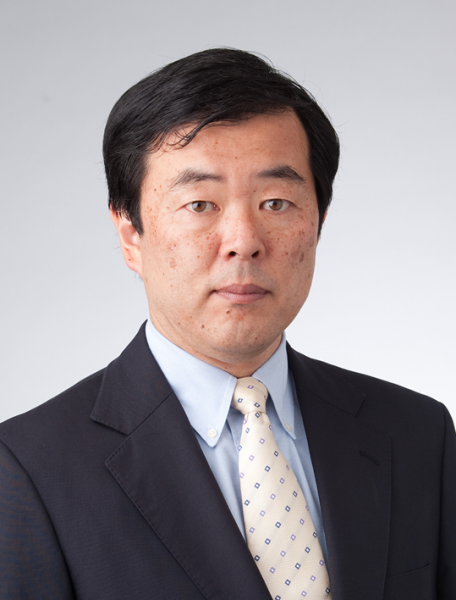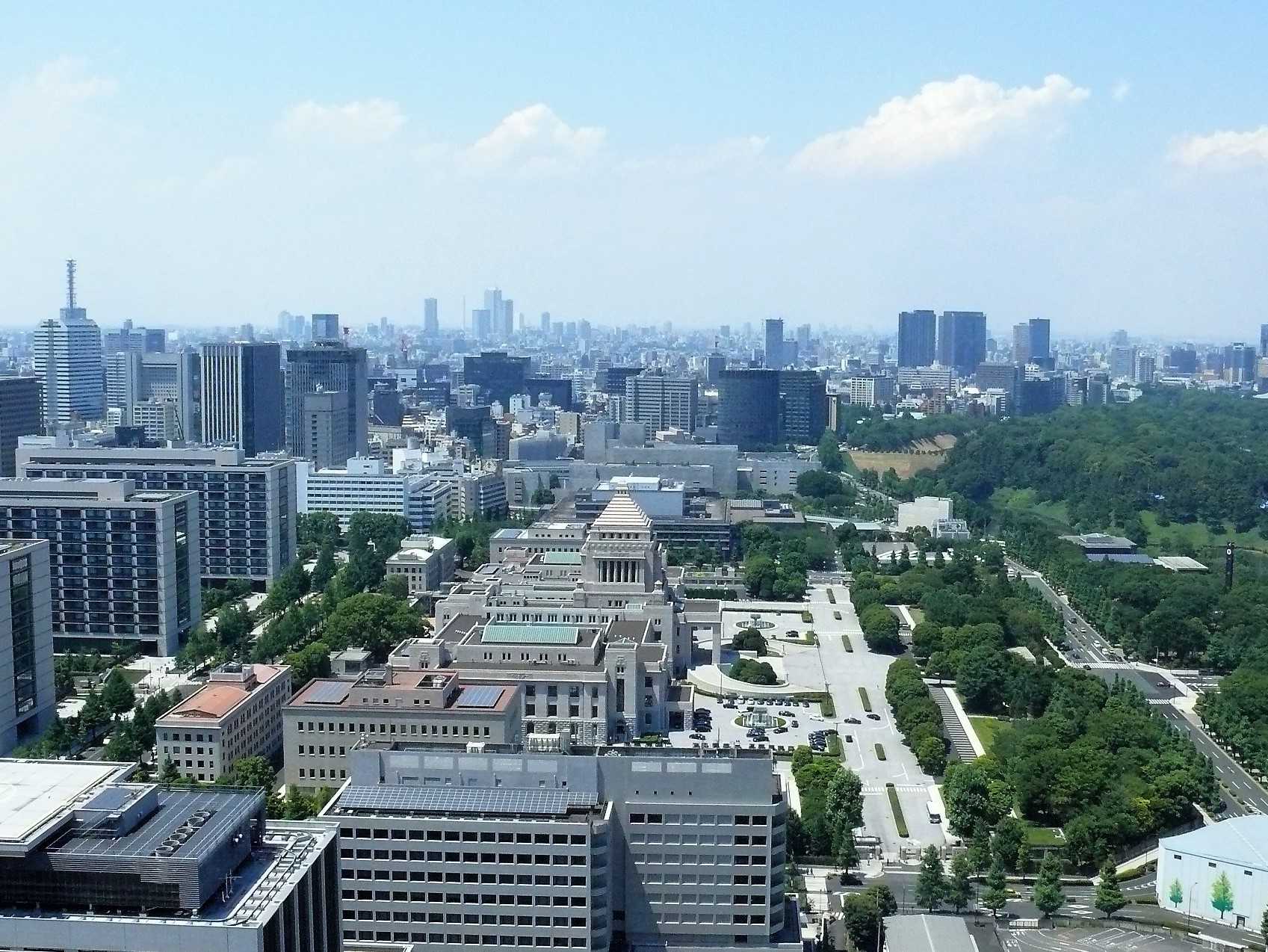Will the “Neo 1955 system” last for a long time?
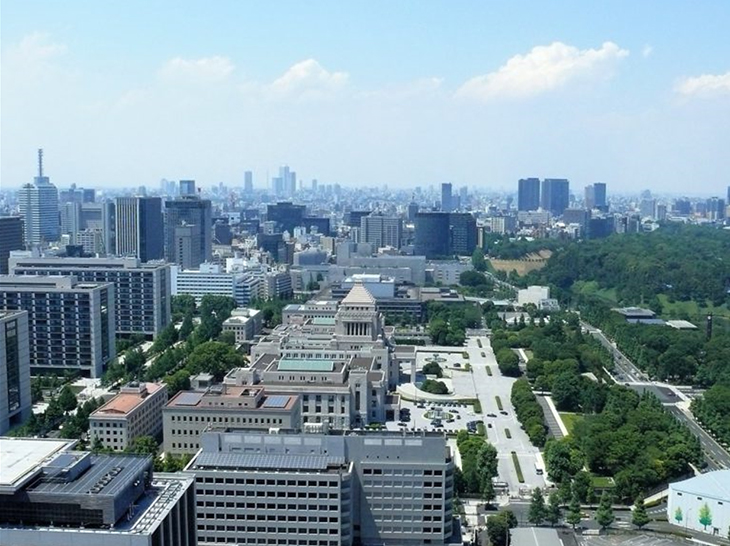
Regardless of whether the government’s approval rating rises or falls, only the Liberal Democratic Party enjoys high support. Almost 30 years have passed since the electoral system was changed to create a two-party system, but one has still not been achieved. . .
Even though the Kishida Fumio administration’s approval rating is declining, support for the opposition parties remains flat. Consider a “narrow path” for opposition parties to emerge as an alternative that poses a threat to the Liberal Democratic Party.
Yamamoto Kentaro, Professor, Hokkai-Gakuen University
Support for opposition parties remains flat
It has been a long time since the current administration’s approval rating has declined while the opposition party’s approval rating has not increased. If opposition parties are seen as having a certain degree of credibility, support for the ruling party should be inversely proportional to support for the opposition parties. However, even though various opinion polls show that the Kishida Fumio administration’s approval rating is on the decline, support for the ruling party, the Liberal Democratic Party (LDP), remains high and stable, and support for the opposition parties remains flat. Recently, the approval rating of the Japan Innovation Party has exceeded that of [the leading opposition party] the Constitutional Democratic Party of Japan (CDPJ). However, overall support for the opposition parties has not increased.
Why does a government’s unpopularity not lead to increased expectations for the opposition parties? In short, voters do not see the current opposition parties as a “viable alternative” to the LDP-Komeito coalition government. If this is the case, the emergence of alternatives is essential in order to break through the unfortunate current situation where distrust in the government can directly lead to a sense of stagnation in politics itself.
However, it is the author’s position that the problem will not be solved by locating the lack of ability of individual opposition parties as the reason why the current opposition parties are not considered a viable option. Making non-Liberal Democratic parties an alternative is a very difficult endeavor to begin with. It is unlikely that this will be achieved without a proper understanding of electoral systems and political history. In this paper, I would like to examine the reasons why opposition parties cannot become viable alternatives, and also shed some light on the narrow path to overcoming this problem.
Barriers to unification of candidates
In 1994, a political reform was implemented in which the Lower House electoral system was changed from the medium-seat district system to the current single-seat district proportional representation system (in the Lower House election, a “single-member district system with proportional representation [the parallel voting system]” was introduced, which is a combination of the single-member district system and the proportional representation system). One of the aims of this reform was to shift to a political party system that could change the government. Of course, behind this was the criticism of the “1955 System[1].” In other words, while the LDP has been a governing party since its formation in 1955, the opposition Japan Socialist Party (JSP) chose itself as a perpetual opposition party soon after its formation, without fielding a majority of candidates for the Lower House election.
The introduction of an electoral system centered on single–member districts that favored large parties immediately prompted non-Liberal Democratic parties to rally, and the New Frontier Party (NFP)[2] was formed at the end of 1994. As a result, a political party system centered on the two major conservative parties, LDP and NFP, was born, and it seemed that the intended purpose of political reform had already been achieved. However, in 1996, those left behind by both the LDP and the NFP formed the third pole, the Democratic Party of Japan (DPJ), and took the stance of an opposition party. As a result, “alternatives” to the LDP have become dispersed. Since then, to this day, non-Liberal Democratic parties continue to be faced with the challenge of unifying alternatives.
Originally, changes in the political party system can be traced back to the Industrial Revolution, when the working class proliferated and proletarian parties emerged, and more recently, with the rapid increase in immigration, social unrest has increased and far-right parties have emerged. In this way, changes in the socio-economic structure surrounding voters are often the trigger. However, in the case of Japan, there has been no major change in the socio-economic structure itself. In addition, because they attempted to artificially change the system by changing the electoral system, distortions in the electoral system were directly reflected in the political party system.
The new Lower House election system is not simply a system of single-member districts, but also a system of proportional representation. However, at the time of the system change, the LDP was already a large party, while the non-LDP side was full of small parties. Therefore, pressure was placed on non-LDP parties to become large parties. In addition, the proportional representation system allowed for the survival of smaller forces (third poles), but these [smaller forces] mainly belonged to the opposition party side.
In this case, the parallel voting system inevitably leads to competition for votes between the opposition parties. If the ruling party selects only one candidate for single-member districts, the opposition parties will also have to narrow their selection down to one candidate. This is because the votes of the opposing parties will be divided among the candidates, putting them at a disadvantage even before the battle begins. If it becomes necessary to unify candidates in single-member districts, the largest opposition party and the third poles will have to compromise and make adjustments, but the existence of proportional representation poses an obstacle here.
In reality, it is quite difficult for small parties to win seats in single-member districts. Voters who want to avoid wasting their vote and want a non-LDP candidate to win will probably vote for a candidate who is likely to win. Voters who think that third poles are better from a policy point of view will vote for the candidate of the largest opposition party, whose policies are similar, rather than the LDP in a single-seat district, given their chances of winning.
In that case, it would be a good idea to have only one candidate in the largest opposition party, but the third poles will not be able to respond easily. For third poles to survive [as a political party] they need to win seats primarily through proportional representation. To this end, it is likely that an effective strategy would be to field many candidates in single-member districts and collect proportional votes. If there are third poles with an opposing party stance, the mixed voting system becomes a yoke, creating an environment where the LDP tends to have an advantage.
Democratic Party of Japan has overcome the “party of lip service”
As the pressure to become a large party was applied only to the non-LDP side, another problem was added to the leading opposition party. The problem is that the assembly of members from various political parties inevitably leads to conflicts over policy.
Of course, the LDP, which is also a large party, has internal policy conflicts. In some cases, there were serious conflicts that led to party splits, such as the postal privatization during the Junichiro Koizumi administration (2001–2006). However, if there is a conflict over the distribution of power between the ruling parties, there is a way to avoid a decisive conflict by sharing some kind of fruit in personnel affairs or other matters. However, this is difficult for the opposition parties. Furthermore, due to the parallel voting system mentioned earlier, even if a party were to break away from the largest opposition party, it would not be impossible for them to survive as third poles. If there is no hesitation about leaving the party, there will be less room for compromise. The leading opposition party will be required to confront the LDP while facing great difficulties in maintaining its centripetal force.
Furthermore, the largest opposition party is a party formed from a collection of diverse political parties. As a result, it is no longer possible to use the deductive method used by the JSP, which advocated a specific ideology and worked out policies based on that ideology. Therefore, their basic strategy is to criticize the ruling party’s response to political issues from time to time, while at the same time calling for reforms that the LDP cannot carry out. Because it cannot advocate an ideology, the color of the party appears vague, and because its focus on immediate issues is criticism of the government, it is ridiculed as a party that pays lip service only to criticism.
To overcome this, an opposition party appealed to urban workers and other voters who have no direct relationship with the LDP, saying that LDP politics will not benefit anyone “except those who are associated with a particular interest group.” While appealing to the “freedom of constraints,” the party demonstrated its ability to govern through its manifesto, which included numerical targets. If the party could retain the support of voters in this way, it would increase the party’s centripetal force and solidify its position as an alternative. In the past, the DPJ succeeded in doing just this and came to power (2009).
Birth of the “Neo 1955 System”
The author has previously observed that, due to political reform, Japan’s party politics has shifted from a left-right ideological conflict centered on the LDP and JSP to a competition between the LDP and the leading opposition party for “better governance.” (Yamamoto Kentaro, Seikai Saihen (Political realignment), Chukoh Shinsho, 2021). The issue of “better governance” changes depending on the political situation. Since the 1990s, issues with the keyword “reform” have emerged one after another, such as political reform, administrative reform, regulatory reform, and economic structural reform. The central question was whether LDP or the opposition parties could tackle these issues more persuasively.
However, in recent years, an argument has been emerging that reform competition has receded into the background, and that the country has returned to conflict between political parties centered on ideology. Since the inauguration of the second Abe Shinzo administration in 2012, emphasis has been placed on foreign and security policies, including allowing the exercise of the right of collective self-defense. As a result, the opposition parties became increasingly left-leaning, switching to the “neo 1955 System” (Sakaiya Shiro, Sengo Nihonseiji-shi (A History of postwar Japanese politics), Chukoh Shinsho, 2023) with the LDP, led by Abe, who has a strong conservative image.
The author believes that the Kibo no To (Party of Hope) controversy in 2017 made this change decisive. Koike Yuriko was first elected in the Tokyo gubernatorial election in 2016, and led Tomin First no Kai in the election to the Tokyo Metropolitan Assembly in 2017, causing a boom. Governor Koike decided to form a conservative party, the Party of Hope, and take part in national politics, which shocked the leading opposition party, the Democratic Party (DP)[3].
The DP was the successor party to the DPJ, which had fallen into a long-term slump after going down [2012], but it continued to struggle. Due to the negative memories of the DPJ administration (2009–2012)[4], its ability to manage the government was considered to be low. Even when looking at the relationship with the Abe administration, which puts national security policy at the forefront, the leftward shift was not enough to secure public support. As mentioned earlier, if this happens, it is inevitable that the party’s unifying force will become clouded. Therefore, the formation of the Party of Hope had a strong possibility of triggering a large-scale split in the DP.
Therefore, then DP President Maehara Seiji asked Koike to join the entire DP to the Party of Hope. However, accepting the DP in its entirety would not only give [the Party of Hope] a left-leaning image, but also inherit the negative legacy of the DPJ administration. Koike was disgusted by this and declared that liberal[5] members (reformists) [of the DP] would be excluded. Then, the liberal politicians who were excluded formed the CDPJ, which surpassed the Party of Hope in the general election that followed and became the largest opposition party. The Party of Hope not only failed to become an alternative to the LDP, but also lost its position (which had been seen as a surefire leading opposition party before the election) to the CDPJ.[6]
The impact of this series of disturbances was great. This is because the CDPJ, which was destined to be a liberal party [reformist party] from its founding, became the largest opposition party in the House of Representatives and became the center of alternative creation. If the CDPJ, which has become the largest opposition party with its liberal policies, were to simply back down on its claims, it would be a betrayal to its supporters. On the other hand, if a particular ideology comes to the fore, the party loses its ability to accept a diverse range of members, and it becomes difficult to become the only alternative while swallowing up the third poles. In fact, the trend toward joint opposition by opposition parties, including the Communist Party, which had been underway since the time of the Democratic Party, was seen as making the CDPJ’s liberal tendencies even more pronounced.
In 2020, CDPJ moved to merge with the Democratic Party for the People (DPP), but it only absorbed a portion of the party and did not eliminate its liberal overtones. The following year, in 2021, the party’s results were sluggish in the Lower House election, and its president was replaced by founder Edano Yukio [Chief Cabinet Secretary of the former DPJ administration] with Izumi Kenta [elected to the Lower House as a former DPJ member in 2003]. However, the party’s attempts to become centrist and shed its image as a liberal party have not been successful, and instead, the party has fallen into a predicament, being caught in the gap by the Japan Innovation Party (JIP).
Looking at it this way, we can see that the reason why the leading opposition party was unable to shed the label of an ideological party was certainly due to the Abe administration, but the influence of Koike was decisive. It is nothing short of ironic that Koike’s ambition to challenge the flourishing Abe LDP government led to a prolonged absence of alternatives and a development that gave the LDP an advantage.
What is required of the leading opposition party
Now, if you ask me if the neo 1955 System will last as long as the “original” 1955 System, I would half agree, but half disagree.
What I agree with is that the LDP-Komeito coalition government is likely to continue for some time and there is little chance of a change of government. In public opinion polls, it is no longer rare for the JIP to have a higher approval rating than the CDPJ. However, it is unclear whether the largest opposition party will be replaced in the next Lower House election. Although it is certain that the JIP will have more support than the CDPJ in Kansai [JIP’s hometown] or urban areas such as the Tokyo metropolitan area, there are still areas where the CDPJ has strong support. Being backed by part of the Japan Trade Union Confederation is also an advantage over the JIP, which expects more support outside of Kansai. Even if the JIP were to overtake CDPJ’s seats, it would not be able to overwhelm the CDPJ, and the CDPJ would still be the largest opposition party in the Upper House, and the rivalry between the two parties would continue for the time being even after the general election.
The natural enemy of both the JIP and CDPJ is supposed to be LDP-Komeito, but for the time being their enemies are each other, and the battle of criticism between the two is becoming more and more intense. If that happens, the LDP-Komeito coalition government will be safe for the time being, and it will likely be a while before a viable alternative is solidified. The neo 1955 System is similar to its “original” in that there is little possibility of regime change.
However, when asked whether ideological conflicts based on foreign and security policies will continue, I do not necessarily agree with that part. It is true that in the current situation, the CDPJ is struggling to shed its liberal label. Due to Russia’s invasion of Ukraine and the rise of China, voters’ interest in security issues will likely remain high to some extent. However, the foreign and security policies of the JIP, which is certain to further increase its number of seats, are far from liberal. The JIP’s foreign policy is still unclear. Although it includes some members who advocate pro-Russian views [and have since left the party], everyone seems to agree that it is a far more right-leaning party than the CDPJ.
Above all, if it brings ideological tones to the fore, it will be difficult for it to be seen as a viable alternative to LDP-Komeito. If the party remains like this, it is likely to allow the rise of third poles and fail in consolidating a single candidate in single-member districts. This is because they will not be able to gather public support and their centripetal force will decline. Regardless of whether the JIP or CDPJ takes the lead, this challenge is common. For this reason, the party will ultimately have to shift direction to include members with diverse views or cooperate with other political parties to promote its role as a carrier of “better governance.” If that happens, ideological conflicts will recede into the background, and we will enter a “neo political realignment period” similar to the period since the late 1990s, when the DPJ rose to prominence.
None of the current opposition parties are considered viable alternatives to the LDP-Komeito coalition government. This is the direct cause of the Kishida administration’s strange sense of stability even as its approval rating declines. For Prime Minister Kishida, what has always been important to him is maintaining support within the LDP, nothing more and nothing less. If you ask me if this is a healthy form of democratic politics, the answer would be no.
What the largest opposition party is required to do is not become obsessed with diplomatic and security ideologies. As the bearer of “better governance,” the leading opposition party should uncover domestic issues that the LDP cannot address and then lead to a single candidate in single-member districts. Foreign policy, domestic politics, and elections are all part of a set, and trying to prioritize only one will not work. Without any of the three, there is no doubt that the opposition parties will not be able to emerge as an alternative that could pose a threat to the Kishida administration.
Translated from “‘Neo 55 nen-taisei’ wa chokikasuruka (Will the “Neo 1955 system” last for a long time?),” Voice, October 2023, pp. 90–97. (Courtesy of PHP Institute) [November 2023]
Keywords
- Yamamoto Kentaro
- Hokkai-Gakuen University
- 1955 system
- neo 1955 system
- electoral system
- Liberal Democratic Party
- LDP
- Kishida Fumio
- Komeito
- approval rating
- opposition parties
- Japan Innovation Party
- JIP
- Constitutional Democratic Party of Japan
- CDPJ
- single-seat district
- proportional representation
- Japan Socialist Party
- JSP
- perpetual opposition party
- New Frontier Party
- NFP
- third poles
- Party of Hope
- Koike Yuriko
- Tomin First no Kai
- Democratic Party
- DP
- liberals
- reformists
- Communist Party
- Abe Shinzo
- Japan Trade Union Confederation
